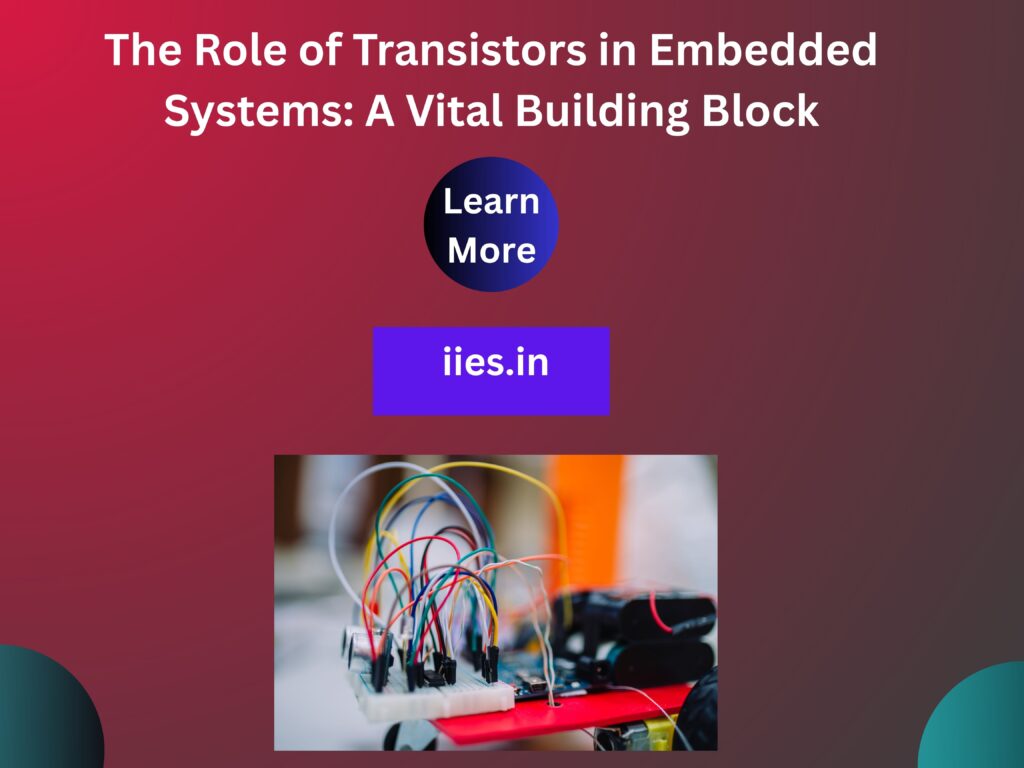
Embedded systems are at the heart of modern technology, seamlessly powering everything from everyday gadgets like smartwatches and home automation devices to critical applications in automotive safety and healthcare. These compact yet powerful systems owe much of their functionality and reliability to a fundamental component: the transistor. Often referred to as the “building blocks of modern electronics,” transistors have been pivotal in shaping the world of embedded technology.
Transistors enable embedded systems to perform essential tasks such as switching, amplifying signals, managing power efficiently, and facilitating communication between devices. They are crucial in achieving the miniaturization, speed, and low-power consumption that modern embedded applications demand. Without transistors, the intelligent behavior we associate with today’s electronics — such as real-time data processing, wireless connectivity, and adaptive control — would simply not be possible.
A transistor operates as a semiconductor component capable of amplifying or switching electronic signals. It is essentially the “brain” of any electronic circuit, enabling it to control the flow of current. Transistors come in two primary types: bipolar junction transistors (BJTs) and field-effect transistors (FETs), with FETs being more commonly used in embedded system applications due to their high efficiency, low power consumption, and small size.
Key Roles of Transistors in Embedded Systems
In embedded systems, transistors are used as switches that control the flow of electrical signals. For instance, in microcontrollers (MCUs) or microprocessors (MPUs) used in embedded systems, transistors allow the system to turn components on and off. This basic function of switching is the foundation for more complex tasks, like turning LEDs on/off, driving motors, and activating communication interfaces.
Embedded systems often need to process weak signals. Transistors help amplify these signals so that they can be further processed by other components. For example, sensors in an embedded system like temperature or pressure sensors produce small analog signals that need to be amplified before being fed to an analog-to-digital converter (ADC) for further processing.
In embedded systems, particularly those powered by batteries, efficient power management plays a vital role.
Transistors help in voltage regulation, ensuring that components receive the correct amount of voltage and current. For example, a power transistor is used in buck converters (for step-down voltage conversion) or boost converters (for step-up voltage conversion) to provide efficient power management in embedded systems.
In modern embedded systems, communication between devices is a critical function. Transistors are used in signal modulation and demodulation for communication protocols like SPI, I2C, UART, and even wireless protocols like Bluetooth and Wi-Fi. The high-speed switching capability of transistors enables rapid data transmission and reception, which is key for applications in IoT (Internet of Things), robotics, and telecommunications.
Embedded systems are often designed to be compact and lightweight, making the size of their components critical. Transistors have played a major role in enabling this miniaturization. As semiconductor technology has advanced, transistors have become smaller and more efficient, allowing more functionality to be packed into smaller devices. Modern embedded systems can include thousands or even millions of transistors in a single microcontroller or microprocessor, enabling complex computations in a very small form factor.
Transistors are also used in embedded systems for temperature sensing and control. In electronic circuits, transistors can act as temperature sensors (using their characteristic of changing their electrical properties with temperature). These transistors can be used to monitor the temperature of a system and trigger cooling mechanisms, ensuring optimal performance and preventing overheating.
Smartwatches, fitness trackers, and other wearable devices are prime examples of embedded systems that rely heavily on transistors. These devices use transistors to control user input, process sensor data, and manage communication (e.g., Bluetooth). The low power consumption and compact size of transistors make them ideal for such small, battery-operated devices.
Smart homes are filled with embedded systems, from smart lights to smart thermostats. Transistors are used to control the switching of these devices, allowing users to manage their home environment with ease. The ability to control these devices remotely and efficiently is powered by the fast switching capabilities of transistors.
In the realm of healthcare, embedded systems are integral to a variety of devices, including diagnostic equipment, pacemakers, insulin pumps, and additional technologies. Transistors help in signal amplification and processing, ensuring that sensors deliver accurate data to the system for analysis. Additionally, transistors contribute to the low-power operation required by medical devices that must run continuously.
Embedded systems in cars, such as advanced driver-assistance systems (ADAS), rely on transistors for processing sensor data (e.g., radar, LIDAR, and cameras) and controlling various car functions. These systems need to perform complex calculations in real-time, which is made possible by the transistors embedded in microcontrollers and processors within the car’s electronic systems.
Despite their critical role, transistors in embedded systems also face challenges, particularly related to power consumption, heat dissipation, and interference from noise in the system. As embedded systems continue to evolve, there is an ongoing push for even smaller and more efficient transistors that can handle increasingly complex tasks while using less power.
The future of embedded systems will likely see the advent of even more advanced transistor technologies, such as quantum transistors or carbon nanotube transistors, which promise to push the boundaries of miniaturization, speed, and energy efficiency.
Indian Institute of Embedded Systems – IIES